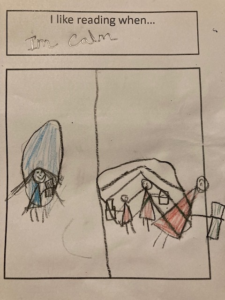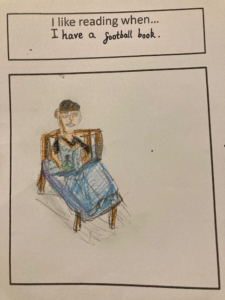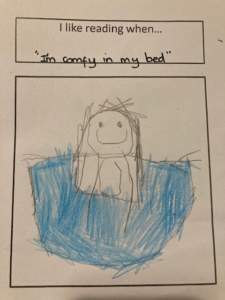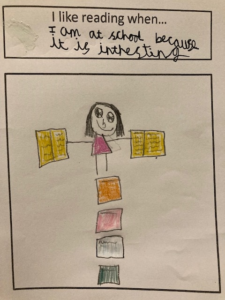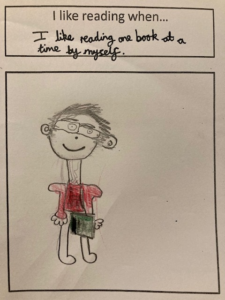English
At Lyminster Primary School, we recognise how vital it is that our pupils leave us as confident writers and readers. We promote high standards of language and literacy and aim to equip children with a strong command of spoken and written language, and to develop their love of literature through widespread reading for enjoyment.
Reading
We have a clear, consistent approach to the teaching of reading. Our intention is that all pupils leave our school being able to read fluently in order to access all areas of the curriculum so they are prepared for the next stage of their academic journey. It is equally important that they have a love of reading for pleasure as well as learning to read for meaning, and teachers read regularly to their class to introduce engaging texts and help children to visualize stories as they listen.
Reading is taught daily in every class through whole class sessions using a range of high quality texts. Questioning is used to develop children’s comprehension skills and discussion helps them to consider other people’s viewpoints and think more deeply about what they have read. We choose different reading roles as our lesson objectives, which help the children to understand the skills that they are developing in order to become more proficient readers.
Our library is the centre of our reading community; children are given the time to choose their own reading books and it is a quiet space for them to sit and read with others from their class or with their reading partners in different year groups. It is also a popular space for children to recommend books to their peers.
Phonics
Phonics is taught daily from the start of Reception to Year 2 and beyond: the children begin to learn the relationship between the sounds they speak and the words they read and write through a programme called Read Write Inc.
In addition to Read Write Inc. books linked to their phonics lessons, the children also learn to read more fluently using Oxford Reading Tree books. This scheme is ordered into coloured ‘Book Bands’ which are monitored regularly so that the children are exposed to texts that match their reading level. The scheme takes them through early exploration of stories to becoming fluent, confident readers. Once the children can read fluently with good comprehension, they are encouraged to select their own reading material from school or home, discussing and developing their personal preferences for authors, genres or writing styles.
Read Write Inc. Spelling
Once the children finish with Read Write Inc. phonics, they move on to Read Write Inc Spelling, a stand-alone programme for children in Years 2 to Years 6. Here is a link explaining more:
For correct pronunciation of sounds, please watch this video:
Writing
At Lyminster, we believe that quality writing is best developed through:
- The use of creative approaches that build imagination and give time for oral rehearsal;
- Exposing children to quality texts, including visual and digital;
- Reading aloud quality literature, in order to model rich vocabulary and a range of writing styles;
- Using shared and guided work to model the craft of writing;
- Embedding the teaching of phonics, grammar and spelling within the writing journey;
- Providing time for child to plan, edit and share their ideas, and to receive and respond to effective feedback from adults and their peers;
- Providing meaningful opportunities for children to write for real purposes and audiences;
The celebration of effort and achievement.
Handwriting at Lyminster Primary School
A consistent, whole school approach to a cursive style of handwriting has been adopted at Lyminster. Handwriting is taught and highlighted through a combination of focused sessions, phonics lessons, English lessons and the wider curriculum. Teachers and support staff model exemplary handwriting across the curriculum where appropriate, although children continue to be exposed to a range of writing styles and fonts when reading texts and around the classroom and the school environment. We aim to make handwriting an automatic process that does not interfere with creative and mental thinking. Children in Reception and Year 1 are taught the correct formation of the cursive style of letters (upper and lower case) and digits (0 – 9) as they become developmentally ready, and are encouraged to write in a pre-cursive style.
We use Letter-join as the basis of our handwriting policy and cover all the requirements of the 2014 National Curriculum. As a catalyst to speedy handwriting, we encourage parents and carers to practice handwriting at home and provide free access to the Home Edition of Letter-join, please click here to view the Letter-join page. Our username and password may be obtained from the school office or from your child’s class teacher.
Children are encouraged to take pride in the presentation of their work. Our aim is to help pupils enjoy learning and developing their handwriting with a sense of achievement and satisfaction. Examples of good practice and progress across all age groups are celebrated weekly as part of our Celebration Assembly and displayed half-termly on our Handwriting Heroes display.
Please see our Handwriting Policy for further information.
Library Links
Here are two links to the elibrary, one is the library website and one their facebook page:
You might also like the link for Encyclopedia Britannica which can also be accessed from home with a library card. Included is a link for the primary school age but there is a secondary school age and adult one available too.
https://library.eb.co.uk/levels/junior
The elibrary is very easy to set up and use but here is a link to all their help sheets including the elibrary and Encyclopedia Brittanica.
https://arena.westsussex.gov.uk/web/arena/helpsheets

